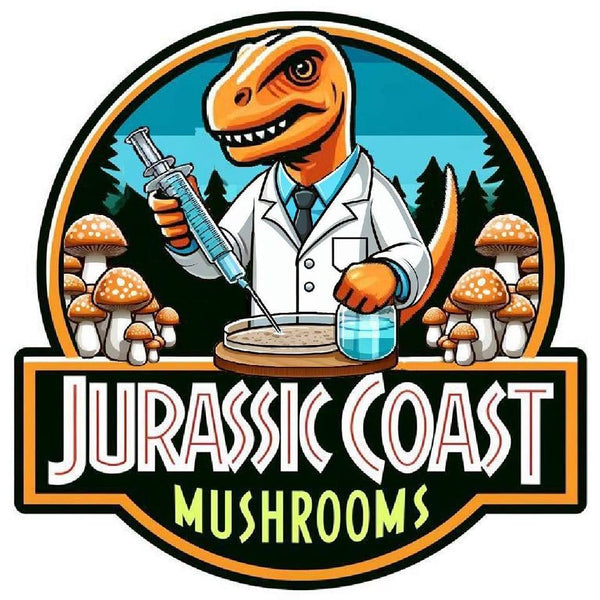
The Ultimate Guide to Cultivating Native Mushrooms at Home
Growing Native Fungi: A Beginner’s Guide to Cultivating Your Local Mycobiome
In recent years, gardening trends have moved well beyond vegetables and ornamentals. One of the most exciting shifts is the steady rise of cultivating native fungi, the practice of propagating mushroom species that naturally occur in your local ecosystem. Unlike ‘exotic’ mushroom growing kits that come prepackaged with non-native species, growing native fungi connects you directly to the ecological rhythms of your local region.
Whether you’re a gardener, a forager, or simply a curious observer of nature, learning to grow native fungi can be both rewarding and environmentally meaningful :)
Why Grow Native Fungi?
1. They support ecological balance.
Fungi are nature’s great recyclers. Native species are already adapted to local climate, flora, and soil microbial type. Cultivating them encourages healthier soil, better nutrient cycling, and stronger local ecosystems!
2. They’re easier to grow than exotics.
Native fungi thrive naturally in your environment, they often require less climate control and maintenance. You’re essentially giving them the exact conditions they’ve evolved to thrive in.
3. They preserve local biodiversity.
Introducing non-native species, even non-pathogenic ones, can disrupt ecological relationships. Growing natives helps maintain the delicate balance between fungi, plants, insects, and wildlife.
We have Colonised Spawn Dowels which are perfect for plugging logs in your garden. Mushroom Grain Spawn, ideal for mixing with a fruiting substrate such as straw or hardwood. Or for those that like to work with Liquid Cultures we have them available Here :)
Finding Native Species to grow yourself.
Start by exploring your local forests, parks, or even your Garden.
Look for mushrooms growing on logs, leaf litter, or soil. A field guide, Social media or a local mycology group can help you identify what you have found.
Some common native species across most of the UK include:
-
Oyster mushrooms (various Pleurotus species)
-
Turkey tail (Trametes versicolor)
-
Pioppino (Cyclocybe aegerita)
-
Velvet Shank (Flammulina velutipes)
-
Lion’s mane relatives in the Hericium genus
When collecting samples, take only a small portion and Leave the rest to continue thriving in their natural habitat.
Ethical and Legal Considerations
Before collecting samples:
-
Check local regulations. Some Woodlands and National Parks forbid mushroom foraging.
-
Never harvest endangered or protected species.
-
Avoid over-collection. A single piece of mycelium or a spore print is more than enough for propagation.
How to Propagate Native Fungi
There are three ‘beginner’ friendly methods when it comes to collecting a wild species of fungi for it’s genetics.
1. Spore Prints/ Tissue Clone
Take a fresh cap, place it gill side down on paper, cover it, and wait 12–24 hours. The spores can then be transferred to sterile a Petri dish of agar. Alternatively take a sterile biopsy of the mushroom flesh and place on agar.
2. Stem-Butt Method
For wood loving species, cut off the fibrous base of the mushroom stem and place it into damp cardboard or hardwood chips. This method is low-tech and surprisingly effective for a lot of species, especially most Oyster mushrooms.
3. Mycelium-Infused Substrate
If you find a decaying log or wood chip full of mycelium, you can cut a small piece and introduce it to a new log or wood chip bed. This mimics how fungi naturally spread.
Creating the Right Environment
Fungi typically require:
-
Moisture: Regular watering or in a location with natural rainfall.
-
Shade: Under trees, behind shrubs, or on the north side of something.
-
Airflow: Avoid somewhere too windy as this will dry the wood out.
-
Compatible substrate: Wood chips, straw, leaf litter, logs, or soil depending on the species you’re growing
The key is to replicate the habitat where you originally found them.
Patience Pays Off
Native fungi often grow at their own pace. Some species fruit within a few months; others may take a year or more to reveal themselves. But the reward of seeing a flush of mushrooms emerge from a patch of soil or a weathered log you previously plugged is well worth the wait!
A Living Partnership With Your Local Land
Growing native fungi is less about domesticating nature and more about collaborating with it. You’re not forcing an exotic organism to fit your environment; you’re amplifying what your ecosystem already wants to do.
If you haven’t seen the most recent blog from Mycopunks they bring awareness to the potential devastating results the Yellow Oyster mushroom can have on our ecosystem. They also announce they’re dropping the Yellow Oyster from their inventory and we’re pleased to see that this movement has caused a ripple throughout the cultivation community, and many other growers are now following suite!
As more gardeners and nature lovers embrace fungi cultivation it’s important we make folk aware of this potential impact they could be having. By choosing a native approach we can collectively nurture healthier soils, more resilient landscapes, and provide deeper ecological support.
And perhaps most importantly, we get to reconnect with the quiet, powerful world beneath our feet! :)
Thanks for reading,
Andy & Sam xx
